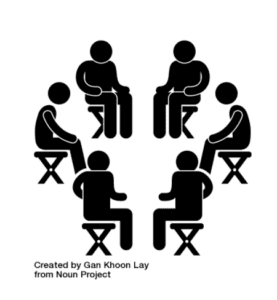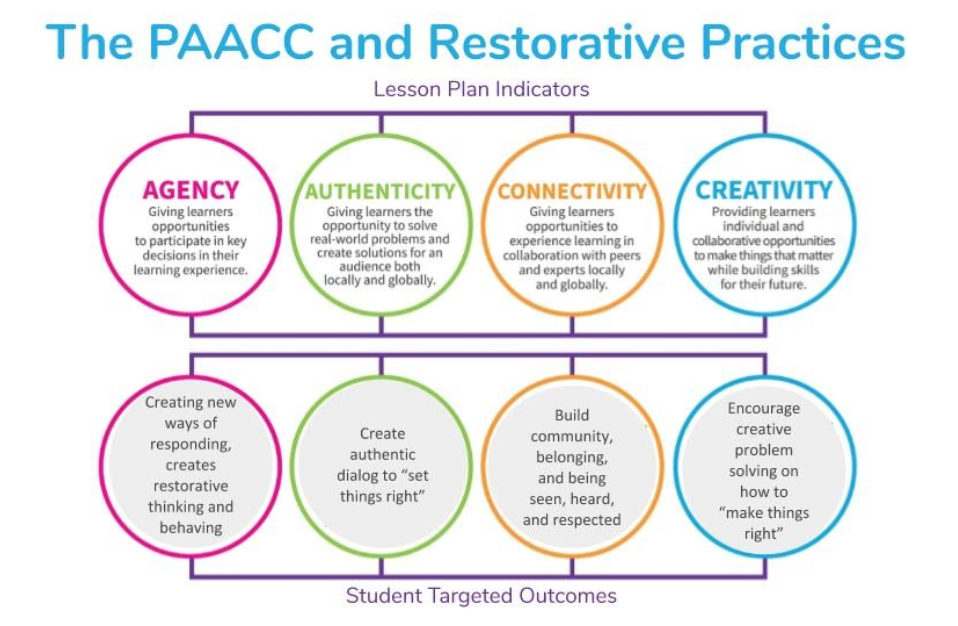Increasing Empathy: Focus on Restorative Practices as Students Return to the Classroom
 Our return to brick and mortar schooling is upon us and like any back-to-school season, we are filled with anticipation, hope, and curiosity. To finally have our classrooms filled with children is a gift that we have longed for over this past challenging year. With all this excitement, we need to ensure we are planning with our students in mind. Specifically, prioritizing their social and emotional health. It’s no secret that our world faced incredible trauma during the pandemic. As educators, it’s important that we increase our empathy and focus on the tools and practices that will support awareness and expression of emotions and dialogue, rather than focus on punishment-oriented outcomes. I’m not suggesting that we should conduct therapy sessions, as that is not in our training and we have school psychologists to collaborate with in those situations. One of the main things we can commit to doing is increasing empathy in our classrooms. We can employ restorative practices, a social science that studies how to build classroom community and strengthen relationships. The idea is that when we feel part of a supportive community where we belong, we respect those around us and become accountable for our actions. It’s about building community and using authentic dialog when responding to challenging behavior in an effort to “make things right.” When these practices are put in place, teachers and students can work together to foster safe learning environments through community building and constructive conflict resolution.
Our return to brick and mortar schooling is upon us and like any back-to-school season, we are filled with anticipation, hope, and curiosity. To finally have our classrooms filled with children is a gift that we have longed for over this past challenging year. With all this excitement, we need to ensure we are planning with our students in mind. Specifically, prioritizing their social and emotional health. It’s no secret that our world faced incredible trauma during the pandemic. As educators, it’s important that we increase our empathy and focus on the tools and practices that will support awareness and expression of emotions and dialogue, rather than focus on punishment-oriented outcomes. I’m not suggesting that we should conduct therapy sessions, as that is not in our training and we have school psychologists to collaborate with in those situations. One of the main things we can commit to doing is increasing empathy in our classrooms. We can employ restorative practices, a social science that studies how to build classroom community and strengthen relationships. The idea is that when we feel part of a supportive community where we belong, we respect those around us and become accountable for our actions. It’s about building community and using authentic dialog when responding to challenging behavior in an effort to “make things right.” When these practices are put in place, teachers and students can work together to foster safe learning environments through community building and constructive conflict resolution.
Have you considered bringing restorative practices into your classroom? It is crucial for educators to plan for opportunities to create and sustain a culture where all learners are accepted, embraced, and heard. When developing restorative practices in your classroom, you should first establish a culture of trust and respect. A good starting point is to identify the current issue/s in your class, identify the root causes, and then create an activity where you can facilitate restorative practices. There are many ways to begin implementation. For those of you who think restorative practice may add value to your classroom, here are two activities that can help get you started:
 Restorative Circles provide an opportunity to have all students share, and listen truthfully in a way that allows the members in the circle to be seen, heard, and respected. Use this opportunity for students to collaboratively approach conflict within the classroom community and find a resolution.
Restorative Circles provide an opportunity to have all students share, and listen truthfully in a way that allows the members in the circle to be seen, heard, and respected. Use this opportunity for students to collaboratively approach conflict within the classroom community and find a resolution.
Check out this Edutopia video to see how one school implemented a restorative circle as a means to create a safe environment for students to reflect.
- Affective Language gives us the ability to identify our emotions and express them to others verbally. By using Affective Language, you can model ways of expressing our feelings and needs. There are four parts to an affective statement.
- Observation: Free of labels and opinions. Makes the student feel seen and recognized by using statements such as, “I notice…” and “I hear…”.
- Feelings: Express your feelings, honestly by using phrases such as, “I feel frustrated…” or “I am worried...”.
- Needs: Express your needs and values by stating, “I need a safe classroom...” or “I need your help in...”.
- Plans/Requests: Frame what it is that you want. For example, “Would you be ok with…” and “Next time…”.
When implementing restorative practices, it is important to take the time to conduct thoughtful preparation, and a shift in the adult mindset which requires the allocation of sufficient resources and dedication to implement new practices with consistency and sustainability. As you begin planning for this work in your classroom, remember to take on each situation with a calm mind, questions to seek student perspective, and time to allow for students to drive the discussion. Take these opportunities as learning moments for all community members and to open space for student voice. Below I’ve included a planning template that can support you in transforming your classroom as you lead with empathy.

Here at LINC, we begin all of our planning with the PAACC. The image you see above is our PAACC, aligned to restorative practices. This resource will support you in keeping the “why” in mind as you plan and identify student outcomes based on the restorative practices activity you choose. Click here for our free tinker template to put your planning into action.
I’d love to hear your thoughts and reflections on how we can continue to increase empathy in our classrooms as we focus on creating restorative practice activities as students return to the classroom. If you’re looking for a thought partner, connect with me via Twitter: @CarolynHanser or email: carolynhanser@linclearning.com.
.